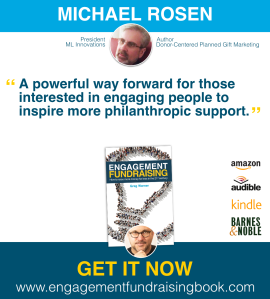Kaylen Ward, who refers to herself as “The Naked Philanthropist,” has a few things she can teach you about fundraising.
The first thing the 20-year-old can teach you is the value of being honest when promoting yourself and your organization. “The Naked Philanthropist” is not a euphemism. Ward really has donated money she earned by posing nude. Furthermore, by leveraging her nudity, she encourages others to give as well.
The raging wildfires in Australia caught the attention of Ward, a resident of California, a state often plagued by brush fires. She decided to take action.
“I donated $1,000 myself,” she tells Guardian Australia. “I had a substantial amount of followers, maybe 30,000 at the time, and I thought that a lot of my followers would pitch in and send in some donations for the wildfires.”
While Instagram has suspended Ward’s account, her Twitter account now has over 288,000 Followers (Jan. 7, 2020). More importantly, Ward tells the Guardian that she estimates that $700,000 has been donated as a result of her efforts in just four days!
Here’s how Ward did it. On January 3, she tweeted (below) that she would Direct Message a nude photo of herself to anyone who provided proof that they had donated $10 or more to any number of charities dealing with the Australian fires, ranging from the Australian Red Cross to the World Wildlife Fund – Australia. Her tweet, liked over 198,000 times, includes a list of qualifying charities (below) and a barely censored image of herself (not shown).
So, here are just six things you can learn from Ward:
1. Do not fall victim to generational stereotypes.
Ward is a member of Generation Z. Gen Z is the cohort following the Millennial Generation. It’s easy to make the mistake of thinking that younger people are not particularly philanthropic. They tend not to give as much to charity as older people, and they tend to be less brand-loyal than those of older generations are. However, that doesn’t mean that younger folks aren’t generous relative to their personal income. Furthermore, just because they may not have developed loyalty to a particular charity does not mean they have no interest in philanthropy. In Ward’s case, she not only gave $1,000 of her own money, she encouraged tens of thousands of other people to donate as well.












